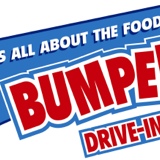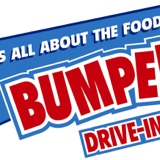Information
-
Document No.
-
Audit Title
-
Client / Site
-
Conducted on
-
Prepared by
-
Location
-
Personnel
Store Location & Date Info
-
Select date
-
Add location
-
Manager on Duty?
Pre-Visit Planning
-
Detail progress on last visit and initiatives
-
Assess 12-month financial - what are the objectives of the visit?
-
Review last report and assigned goals, timetable
-
Consider major marketplace trends and events
-
Determine the TYPE of visit
-
-
-
-
-
-
Time Frame of Visit?
-
Determine the FOCUS of the visit
-
Financial (sales, profits, labor, food, marketing, R&M)
-
Morale (turnover, crew engagement, assistant managers)
-
Leadership (Testing, bench strength)
-
Systems/Processes (purchasing, receiving, inventory, scheduling, paperwork, throughout, P&L, etc)
-
Safety & Security
-
Marketing (POP, menus, signage, suggestive selling, LSM)
-
Checklists up-to-date
-
Guest-centric (service, shopper scores, flow, complaints, power of the parking lot, WOWs, etc)
-
Follow up from previous visit/information gathering
-
Training/Recognition (observe, attend or facilitate a crew meeting, orientation, in-store training, pre-shift meeting, certification, etc)
-
Major Operation Turnaround (requires multiple days to analyze root causes)
Outside the Unit
Walk it SOLO first from the Guest Perspective (customer touch points)
-
Curb Appeal
-
Parking Lot
-
Back Door
-
Cleanliness
-
Landscaping
-
Front Door
-
Signage
-
Building
-
Dumpster
-
Lighting
-
Walkways
-
Stalls
-
Use company checklists of what to look for paying special attention to systems, standards, people, potential danger and repair/maintenance/equipment issues
Now Walk It with the GM from the GM's Perspective (note what they see, don't just point out what you saw)
-
Curb Appeal
-
Parking Lot
-
Back Door
-
Cleanliness
-
Landscaping
-
Front Door
-
Signage
-
Building
-
Dumpster
-
Lighting
-
Walkways
-
Stalls
-
How well do your managers walkabout-and-work the store (including kitchen, stalls, parking lot)? What do they see? What do they miss? How well do they interact with team members and customers?
-
What approach do they use to impact Key Result Areas? Note what's there and what's not there.
-
Try to get a sense of what they understand and if there are limits to their ability to connect process to performance. If problems are evident, do they treat only symptoms?
Inside the Unit
-
Spread energy, don't take it away. Greet the entire team. Be a Bumpers Ambassador.
-
Use Bumpers checklists, assess performance
-
Stay focused on the performance you came to address. If you see another major area that needs attention, note it and address it later.
-
Walk the store alone first, see what's being done, what's being overlooked and make notes. Now spend time with the manager, note their observations and interactions.
Observations: 1 = Perfection, 3 = Further observation, 5 = Immediate Action
-
Evaluate parking lot, menu boards, lights, canopy, signage, banners, lighting, walk-ins, storage areas, equipment, doors and windows
-
Possible underlying cause?
-
Observe line checks, quality, food safety, sanitizer, temp log, check for cross contamination
-
Possible underlying causes?
-
Observe food handling and hand washing
-
Possible underlying causes?
-
Observe pre-shift meeting. Is there effective and motivational coaching going on? Is it fun?
-
Possible underlying cause?
-
Observe carhops for service, selling, recipe knowledge, efficiency and WOW. Time cars, watch, listen and time.
-
Possible underlying causes?
-
Observe behaviors and efficiency of speaker operator - upbeat, suggestive selling, knowledgable and clearly understood?
-
Possible underlying cause?
-
Are fundamentals being properly executed in the kitchen? Car on called, portioning recipes?
-
Possible underlying cause?
-
Make a note of progress/regress since last visit. Did they resolve last visit's challenges?
-
Possible underlying cause?
-
Review manager petty cash and reports. Look for details.
-
Possible underlying cause?
-
Schedule - where can we cut without hurting sales? Compare the schedule to the time sheets - do they match? Add up the dollars on the time sheets and compare them to the reported figures.
-
Possible underlying cause?
-
Inventory - Compare inventory to the 46 Report to determine what is missing. What is the reason? Wastage? Theft? Is there too much inventory on hand? Why? (Cap of $3500 for food and $1000 for paper.)
-
Possible underlying cause?
-
Daily Reports - Are there paid outs? For what? Why? Are they needed? Are deposits being made on time? Are the reports properly filled out? Are they properly coded?
-
Possible underlying cause?
-
Ledger Sheet - Is it up to date? Is every category posted? Check bills and paid outs. How do they compare to the P&Ls?
-
Possible underlying cause?
-
Sales - What can be done to increase sales? Are food quality and service in line before promotions? How can greater sales be achieved at this store? What are local competitors doing?
-
Possible underlying cause?
-
Add media
WATCH FOR DETAILS!
-
Drinking or eating up front?
-
Are employees using printed paper products?
-
Are employees eating? Did they pay?
-
Are items being pre-portioned?
-
How much ice is being put in cups?
-
How much strawberry, chocolate, candies, etc is being used in shakes, sundaes, etc?
-
Are napkins being put in bags and how many?
-
Is the ketchup on carhop trays instead of in bags, how much is given and is it on request?
-
Is there water in the tomatoes or lettuce?
-
Is the working area really clean?
-
Is there too much prep or bread in the store?
-
Are there spoiled tomatoes and/or lettuce in a box?
-
Is dressing portioned?
-
Is the chicken seasoned properly?
-
Ae the chicken tenders and bits cut correctly and weighing correctly?
-
Are fries being cooked long enough?
-
Is the grease being shaken off of fries, tots, etc?
-
Are we filtering two times a day?
-
Is the ice cream machine properly calibrated?
-
Is the meat being seasoned (burgers and phillies)?
-
Is the grease being drained off of the meat before placing it on the bun?
-
Is there a lot of waste?
-
Is the waste bucket being used?
-
Did you weigh the waste bucket?
-
Did you check the garbage can for prep and other food wastage?
-
Was there any?
-
Is the stock room clean and organized?
-
Do the carhops know how to execute the recovery strategy?
After the Visit
-
Select a quiet area and review your visit before engaging the manager.
-
Label and date your visit report.
-
Record as much detail as possible.
-
Sort bullet points and actionable items.
-
Next to each challenge area, note:
-
Is the problem new or recurring?
-
Is it a surface problem or deeper rooted?
-
What process or system might have failed?
-
Is it a team or management performance problem?
-
If it's a manager challenge, is it a result of skill, ignorance or attitude?
-
Make a difference list. What would be different if you were manager?
One-On-One Manager Discussion - briefly review and recap key points of prior visits
-
Your top 3 concerns:
-
Your manager's top 3 concerns:
-
Share and discuss your impressions with your manager. This should be a dialogue, not a monologue. Bring energy, don't take it away.
-
Balance discussion between unit performance and personal development.
-
Praise progress. Then identify problem areas and their possible root causes together. Don't just "show and tell." Ask questions that uncover mutual understanding and drive development.
-
Link all suggestions and direction to goals and shift execution.
-
Agree on an action plan and next steps with a timetable and leave on a written record. Detail action plan below.
-
What change did I impact today? What progress did I make?
Continuous Improvement is Key
-
What are three things I can do to improve my visits?
-
What are three things I can do to improve my one-on-one conversations with my managers?
-
Did I achieve my store visit goals?
-
Knowledge transfer/Energy transfer
-
Goal-setting
-
Cost control/Budget
-
Training/Testing
-
Alignment with company objectives, ERM, CRM
-
Real improvement (not band-aids)
-
Marketing and sales goals focus
-
Teach everyone something new?
-
Review execution of all promotions
-
4 ways to build sales
-
Add signature







